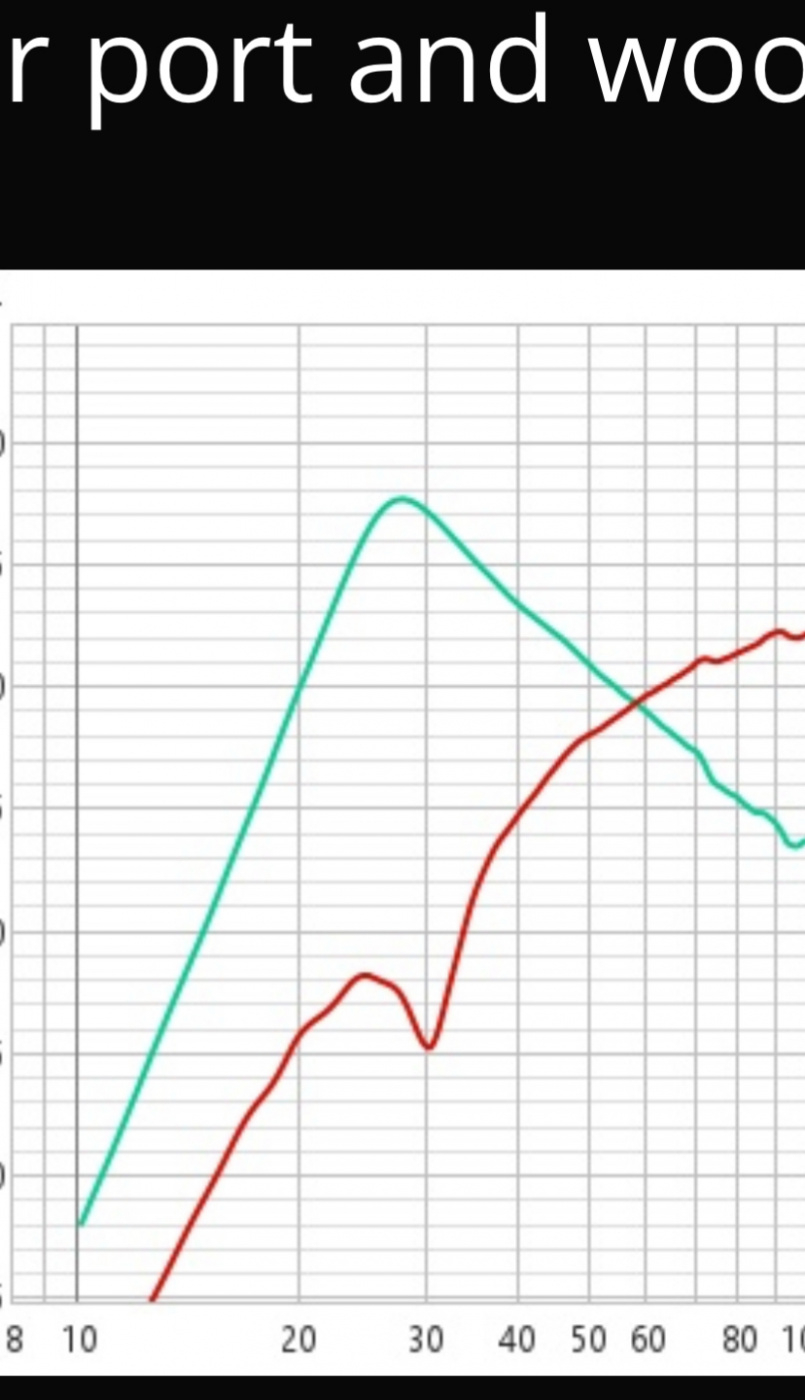It might have something to do with motor strength. In a TL the tuning freq. on low Q woofers should be slightly above resonance. and just the opposite for woofers with weak motors. It would make for a fun experiment. Slip, I think they call it slip.
You have the right idea. Rotary electric motors have slip, that is where they turn slower than the frequency that they are supplied with. A 4 pole motor should turn 1800 RPM at 60 Hz in theory, but are always somewhat slower. A typical AC motor might be rated around 1740 to 1750 RPM at 60 Hz. Rotary motor slip probably also depends on the strength of the magnetic field. I have never heard it called slip in audio, but I think it may be the same concept.
Only thing I can come up with trying to think things through is the dip in cone movement could indicate the point in the port output where the "linear" portion of the upward slope stops and starts to nose off. Sounds like calculus stuff.. man I hated calculus.
My understanding is that port output relative to cone motion peaks at Fb but since cone motion increases rapidly below Fb the ports peak output will be a bit below Fb. I don't remember where I read that though.
Comments
I've yet to get any answers about this, but here again the port peak and driver valley don't line up. You'd think they would.

I'm not sure that aligning at the same frequency is a given.
deleted
But I'd assume it would, but I'm finding out, it doesn't. No one's explained why they don't, it's the tuning frequency, they should corespond, no?
Way long ago, I assumed that they would line up, but then found the same difference noted above when I measured the port and woofer nearfield.
I still don't know the why either. I just know they don't.
InDIYana Event Website
It might have something to do with motor strength. In a TL the tuning freq. on low Q woofers should be slightly above resonance. and just the opposite for woofers with weak motors. It would make for a fun experiment. Slip, I think they call it slip.
maybe not
Maybe probably not
You have the right idea. Rotary electric motors have slip, that is where they turn slower than the frequency that they are supplied with. A 4 pole motor should turn 1800 RPM at 60 Hz in theory, but are always somewhat slower. A typical AC motor might be rated around 1740 to 1750 RPM at 60 Hz. Rotary motor slip probably also depends on the strength of the magnetic field. I have never heard it called slip in audio, but I think it may be the same concept.
Only thing I can come up with trying to think things through is the dip in cone movement could indicate the point in the port output where the "linear" portion of the upward slope stops and starts to nose off. Sounds like calculus stuff.. man I hated calculus.
My understanding is that port output relative to cone motion peaks at Fb but since cone motion increases rapidly below Fb the ports peak output will be a bit below Fb. I don't remember where I read that though.